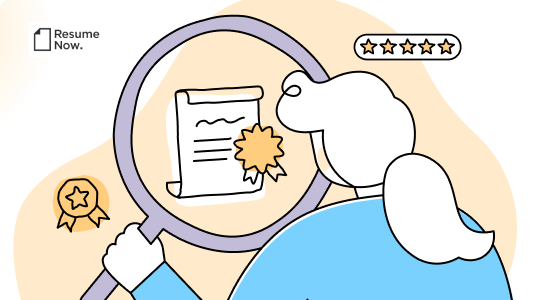Popular Product Manager Resume Examples
Entry-level product manager resume
An entry-level resume for a product manager should highlight relevant projects, technical skills, coursework, and internships to showcase a solid foundation in product development and management.
Focuses on goals: The applicant demonstrates a proactive approach to professional development as an entry-level product manager, evidenced by their successful product launches and commitment to agile practices that drive efficiency and user engagement.
Prioritizes readability: Choosing a simple resume template lets recruiters easily identify qualifications, boosting this candidate's likelihood of making a lasting impression without unnecessary distractions.
Mid-career product manager resume
A mid-career product manager resume should emphasize a strategic mix of successful project experiences, relevant skills, and evidence of professional growth to attract potential employers effectively.
Includes mix of skills: This resume effectively balances hard skills, like agile methodologies and project management, with soft skills such as cross-functional leadership and stakeholder collaboration, showcasing the applicant’s comprehensive expertise.
Employs active language: Powerful action verbs such as "led," "reduced," and "managed" highlight initiative and quantifiable achievements, showcasing a proactive approach to product management.
Experienced product manager resume
An experienced product manager resume should prioritize highlighting measurable achievements and showcasing a clear progression of skills and responsibilities throughout their career.
Follows traditional format: The chronological resume format effectively showcases the extensive experience of the job seeker by clearly illustrating their career progression.
Quantifies achievements: Quantifiable achievements provide clarity and impact to a resume, making it easier for recruiters to grasp the job seeker's contributions. By presenting results in measurable terms, such as percentage improvements or cost savings, this job seeker effectively demonstrates their value.
No experience product manager resume
A resume for an applicant with no experience should highlight relevant skills, projects, and any leadership roles to showcase the applicant's potential and readiness for a product manager position.
Overcomes lacking experience: Including volunteer experience highlights this applicant's foundational knowledge and readiness for a product manager role, even if they have limited professional experience.
Uses a simple style: The resume's clean and straightforward design effectively highlights qualifications, showcasing relevant experience in product management and coordination roles without unnecessary distractions.
More resume examples
Additional Guides
- Amazon
- Analyst
- Architecture
- Art
- Artist
- Arts
- Aviation
- Banking
- Billing
- Biology
- Biotech
- Budtender
- Business
- Business Operations
- Cashier
- Chef
- Chemical Engineering
- Chemistry
- Child Care
- Civil Engineering
- College
- Communications
- Compliance
- Computer
- Computer Hardware
- Computer Science
- Computer Software
- Construction
- Consultant
- Cook
- Copywriting
- Cosmetology
- Culinary
- Customer Service
- Customer Success Manager
- Cyber Security
- Data Systems Administration
- Dentistry
- Driving
- ECommerce
- Education
- Electrical
- Electrical Engineering
- Engineering
- Entertainment
- Entry Level
- Environmental
- Esthetician
- Event Planning
- Executive
- Fashion
- Federal
- Film
- Finance
- Firefighter
- Fitness & Nutrition
- Food Service
- Government
- Graduate
- Graphic Designer
- Handyman
- Healthcare Support
- High School Student
- Hospitality
- Human Resources
- Industrial Engineering
- Insurance
- Interior Design
- Internship
- Inventory Management
- IT
- Janitorial
- Law
- Law Enforcement
- Legal
- Library Museum
- Logistics
- Maintenance
- Manager
- Marketing
- Mechanical Engineering
- Medical
- Mental Health
- Metal Work
- Military
- Music
- Nursing
- Performing Arts
- Pest Control
- Pharmacy Technician
- Photographer
- Physical Therapy
- Pilot
- Plumbing
- Product Owner
- Production
- Production Assistant
- Program Manager
- Project Manager
- Psychology
- Purchasing
- Quality Control
- Radiologic Technologist
- Real Estate
- Restaurant Manager
- Retail
- Safety Security
- Sales
- Sales Associate
- Scholarship
- Sciences
- Server
- Shipping
- Skilled Trades
- Social Services
- Software Engineer
- Special Education
- Sports
- Statistics
- Stay At Home Mom
- Student
- Supervisor
- Teacher
- Teen
- Training Development
- Transportation
- Travel
- Ux Designer
- Veterinary
- Virtual Assistant
- Waitress
- Web Development
Product Manager Resume Template
Looking for a head start? This professional product manager template is your go-to—personalize it with your details to make it uniquely yours.
Jin Martinez
Greenfield, IN 46145
(555)555-5555
Jin.Martinez@example.com
Professional Summary
Dynamic Product Manager with 8 years of expertise in driving product innovation and strategic growth. Proven track record of increasing efficiency by 25% through agile methods and strategies, leading to 30% revenue growth.
Work History
Product Manager
InnovateTech Solutions - Greenfield, IN
January 2023 - October 2025
- Led product team to 30% growth in 18 months
- Championed agile methods, increasing efficiency by 25%
- Reduced costs by 15% through strategic vendor partnerships
Product Development Specialist
TechPulse Innovations - Greenfield, IN
January 2019 - December 2022
- Designed features that increased retention by 40%
- Streamlined workflows, reducing time-to-market by 20%
- Managed cross-functional teams with 95% satisfaction
Business Analyst
DataDriven Solutions - Indianapolis, IN
January 2017 - December 2018
- Analyzed trends predicting 25% sales increase
- Optimized reporting, saving 10% on analysis costs
- Assisted in strategy that boosted client base by 50%
Languages
- Spanish - Beginner (A1)
- French - Beginner (A1)
- Mandarin - Beginner (A1)
Skills
- Product Lifecycle Management
- Agile Methodologies
- Data Analysis
- Strategic Planning
- Cross-functional Team Leadership
- Vendor Relationship Management
- Cost Reduction Strategies
- Customer Retention Tactics
Certifications
- Certified Scrum Product Owner (CSPO) - Scrum Alliance
- Product Management Professional - Product School
Education
Master of Business Administration Business Strategy
Harvard University Cambridge, MA
May 2016
Bachelor of Science Computer Science
University of California, Berkeley Berkeley, CA
May 2014
Must-Have Skills on a Product Manager Resume
A strong skills section is essential for any effective resume.
The following data highlights the most sought-after hard and soft skills for a product manager resume based on insights from Resume Now’s internal resume data.
When you’re ready to improve your resume, check out our AI Resume Skills Generator. It offers tailored suggestions for both hard and soft skills aligned with your job title, helping you create a comprehensive and custom skill set.
Writing Your Product Manager Resume
Having explored these effective resume examples, it's time to dive into the specifics of how to write a resume. We'll provide step-by-step guidance through each section, ensuring you create a standout document that showcases your skills and experiences.
List your most relevant skills
Creating a strong skills section in your product manager resume means showcasing both hard skills, such as project management and data analysis, and soft skills like leadership and strategic thinking. This combination reflects your ability to drive product success and collaborate effectively with cross-functional teams.
Incorporating keywords from the job listing will make your resume stand out. These keywords help you connect with human recruiters looking for specific competencies while also ensuring that applicant tracking systems recognize you as a strong job seeker.
Example of skills on a product manager resume
- Proficient in using analytics tools to drive product strategy and decision-making
- Adept at collaborating with cross-functional teams to ensure project alignment
- Strong communicator who effectively conveys ideas and feedback
- Creative thinker with a passion for innovating user experiences
Highlighting your soft skills on a resume can set you apart from the competition. Employers appreciate interpersonal abilities because they are often more challenging to cultivate than technical skills, making them a valuable asset in any team environment.
Highlight your work history
Your work experience section should not just list responsibilities but highlight achievements to demonstrate how effectively you've used skills. Ensure each entry includes action-oriented language and relevant keywords that reflect potential employers' demands.
For every job entry, include essential information such as your job title, employer's name, and employment duration. This clarity helps establish credibility and showcases the breadth of your experience in product management. Concentrate on specific accomplishments illustrating how you made a measurable impact on projects or teams.
Example of a product manager work experience entry
- Product Manager
Tech Innovations Inc. - San Francisco, CA
June 2019 - Present - Lead cross-functional teams to launch 5+ successful products within budget and ahead of schedule, achieving a 30% increase in market share
- Conduct market research and user testing to define product requirements, resulting in a 40% improvement in user satisfaction ratings
- Develop and maintain product roadmaps that align with business goals, prioritizing features based on customer feedback and competitive analysis
- Facilitate agile ceremonies to improve team collaboration and drive project momentum, reducing delivery times by 25%
- Mentor junior product team members, fostering professional growth and improving team productivity through knowledge sharing
Aim for clarity in your resume bullet points. Focus on actionable results and specific achievements, using concise language that highlights your impact without overwhelming the reader with unnecessary details.
Include your education
The education section of your product manager resume should list your degrees and diplomas in reverse-chronological order, starting with the most recent. Exclude your high school diploma if you have a bachelor's degree or higher, and include any relevant certifications that can strengthen your qualifications in the field.
If you're currently studying or have not completed your degree, specify the highest level achieved along with an expected graduation date. Highlighting relevant coursework or academic projects that demonstrate skills related to product management can be particularly helpful for recent graduates or current students.
Common certifications for a product manager resume
- Certified Scrum Product Owner (CSPO) – Scrum Alliance
- Project Management Professional (PMP) – Project Management Institute (PMI)
- Certified Agile Leadership (CAL) – Scrum Alliance
- Product Management Certificate – Cornell University
Sum up your resume with an introduction
Creating an effective profile section on your resume is important as it sets the tone for your application and provides a snapshot of your professional identity. It's your chance to make a solid first impression, grabbing the attention of hiring managers who sift through numerous resumes daily.
If you have substantial experience in the field, a professional summary is the best route to take. This format allows you to showcase key accomplishments and relevant skills right at the top of your resume. If you have limited experience, consider writing a goals-focused resume objective that emphasizes your dedication to career growth.
Professional summary example
Dynamic product manager with over 8 years of experience driving product strategy and development in competitive markets. Adept at leading cross-functional teams, optimizing product roadmaps, and improving customer engagement through data-driven insights. Recognized for launching successful products that consistently exceed business objectives and improve user satisfaction.
Resume objective example
Enthusiastic product manager eager to apply strong analytical skills and creative problem-solving abilities to drive product innovation within a forward-thinking team. Committed to leveraging user feedback and market insights to improve product offerings and optimize customer satisfaction.
When crafting your resume profile, always start with your job title. This approach helps convey your professional identity right away, allowing employers to quickly understand who you are and what you bring to the table.
Add unique sections to set you apart
Including optional resume sections can highlight your unique qualifications for product manager positions. These sections allow you to present aspects of your experience that set you apart from other job seekers.
Think about showcasing relevant hobbies or volunteer efforts that align with the skills needed in product management. For instance, if you've led a community project or developed a product-related blog, it illustrates your initiative and passion for the field. Such details not only reflect your professional capabilities but also provide insight into your values and work ethic, making your application more compelling to potential employers.
Three sections perfect for a product manager resume
- Languages: As a product manager, you constantly collaborate with diverse teams. Highlighting your language skills on your resume shows your ability to communicate effectively and improve teamwork across different markets.
- Volunteer Work: Including volunteer work on a resume can improve your professional profile. It showcases your commitment to community service and highlights transferable skills that employers value, such as teamwork and leadership.
- Accomplishments: As a product manager, quantifiable accomplishments are vital for demonstrating your impact on product success. Highlight these achievements by incorporating them into your work history or featuring them in a separate accomplishments section.
5 Resume Formatting Tips
- Choose a format that matches your career stage.
Choosing the right resume format is important for your job search. If you have extensive experience, a chronological format showcases your career progression effectively. For those with less experience, a functional resume can highlight your skills and potential. Consider using a combination format to incorporate both elements for a balanced approach.
- Pick a smart resume template.
Using a professional resume template is key to improving readability and maintaining clean formatting. A well-structured template allows your skills and experiences to shine without distraction. If you opt for a custom layout, prioritize simplicity and select fonts that are friendly to applicant tracking systems.
- Select an appropriate font.
Choose fonts that improve your resume’s readability by opting for standard options like Helvetica, Georgia, or Verdana. These are professional font choices that appeal to both ATS and hiring managers alike.
- Use consistent formatting.
Align your resume to the left and maintain uniform margins to ensure a polished and professional look that catches the eye of hiring managers.
- Keep your resume to one or two pages.
As a product manager, making a strong impression is essential. Generally, resumes should be one page long, particularly when emphasizing relevant experience. Concentrate on concise content that effectively showcases your skills and achievements.
Tools for Your Job Search
Are you gearing up to apply for that exciting product manager position? Before you hit send on your application, make sure to use our ATS Resume Checker. This essential tool provides insights into how your resume will fare with the automated systems that many companies use to filter job seekers during the initial screening process.
Looking for a way to elevate your resume? Our AI Resume Builder is here to help! It offers tailored recommendations specific to your product management experience and includes professional templates designed to showcase your skills and past accomplishments effectively.
Frequently Asked Questions
Last Updated: November 4, 2025
Absolutely. A cover letter is important because it adds depth to your resume and creates a valuable communication channel with employers. It’s your opportunity to express why the product manager role excites you and how your unique skills align perfectly with their needs. Don’t overlook this important step—write a cover letter that improves your application.
For a quick and effective solution, try our AI Cover Letter Generator. It allows you to create tailored cover letters in just minutes, offering various cover letter template options that match your resume seamlessly. Elevate your application with ease and confidence!
A resume is a concise document, typically one to two pages long, that highlights your skills and experiences. In contrast, a CV (curriculum vitae) is more extensive and can span several pages, providing detailed information about your academic background, research achievements, publications, and professional experience.
You should use a CV when applying for roles in academia, science, law, or medicine. If you're unsure how to create an effective CV for such positions, our online CV Maker can streamline the process for you. With a variety of tailored CV templates available for different industries and career levels, you can quickly put together a professional document that meets your needs.
To write a strong CV, start by organizing your information under clear headings like education, experience, skills, and certifications. Select professional CV templates that are both visually appealing and compatible with applicant tracking systems. Improve your application by tailoring the content to each job, including relevant keywords from the job description to boost visibility.
Also, take time to review CV examples from professionals in your industry for inspiration. These samples can offer insights into how successful job seekers showcase their qualifications and assist you in identifying effective strategies to present your own experiences and achievements.
Build a dynamic skills section by pairing technical proficiencies, such as agile methodologies and data analysis, with key soft skills like leadership and communication. Illustrate in your experience how these skills have driven product successes, improved team collaboration, or improved project outcomes to portray your comprehensive expertise as a product manager.
An active LinkedIn presence is important for a product manager's job search. Leverage LinkedIn to expand your network and effectively highlight your project successes and expertise.
To excel as a product manager, invest in your professional development through relevant certifications and training programs. Engage with industry associations, follow the latest trends in product management, and participate in workshops or webinars to improve your skills and knowledge.
Was this information helpful? Let us know!
Hailey is a career advice writer dedicated to helping job seekers excel in their careers.
More resources

How to List Language Skill Levels on Your Resume
Language skills give you an instant advantage in the job marke...

These Certifications Align With the 11 Most In-Demand Skills of 2030 and Can Boost Pay
Resume Now report reveals the high-value skills and certificat...

How to Write a One Page Resume: Guide & Examples for 2025
Was this information helpful? Let us know ...




